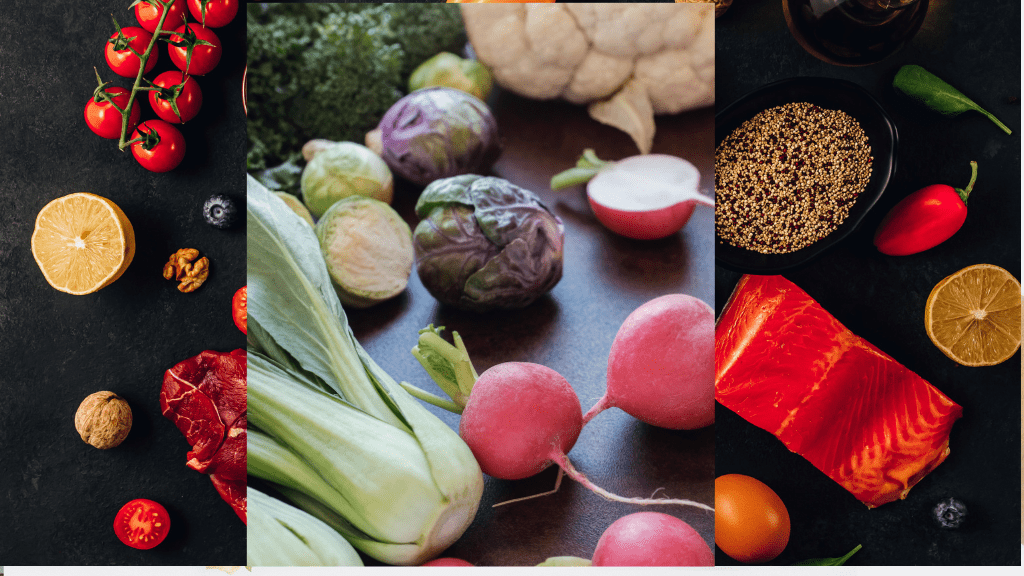The Environmental Benefits of Eating High-Fiber Vegetables
As people become more conscious of their health and the planet, dietary choices are playing a central role in promoting sustainability. High-fiber vegetables not only contribute to improved health but also have a significant positive impact on the environment. By incorporating more plant-based, high-fiber vegetables into your diet, you can reduce your environmental footprint in multiple ways, from decreasing greenhouse gas emissions to conserving water and land resources. In this blog post, we'll explore the environmental benefits of eating high-fiber vegetables and why this dietary choice is essential for both personal and planetary well-being.
1. Reduced Greenhouse Gas Emissions
One of the most significant environmental benefits of eating more high-fiber vegetables is the reduction in greenhouse gas (GHG) emissions. Animal agriculture is a leading contributor to GHG emissions, particularly methane and carbon dioxide. Livestock farming generates methane through enteric fermentation in animals like cows and sheep, while large amounts of carbon dioxide are released through the production and transport of animal feed, as well as manure management.
In contrast, growing vegetables requires far fewer resources and produces significantly less GHG emissions. A diet centered around plant-based foods, such as high-fiber vegetables, can help reduce the demand for animal products, leading to a decrease in the overall environmental burden. For instance, producing a pound of beef generates 25 times more GHG emissions than producing a pound of vegetables like spinach or broccoli. By choosing to eat more high-fiber vegetables, individuals can actively contribute to reducing their carbon footprint.
2. Conservation of Water Resources
Water scarcity is becoming an increasingly pressing global issue, with agriculture accounting for approximately 70% of freshwater use worldwide. Animal agriculture is particularly water-intensive, as it requires large amounts of water to grow feed crops, hydrate animals, and manage waste.
In contrast, high-fiber vegetables require far less water to grow. For example, producing one kilogram of beef can use over 15,000 liters of water, while the same amount of vegetables like lettuce or broccoli may use only a fraction of that amount—around 300 to 500 liters. By shifting toward a diet that prioritizes high-fiber vegetables, you can help conserve precious water resources. This reduction in water consumption is crucial, particularly in regions facing droughts and water shortages.
Additionally, plant-based farming practices, especially those that focus on sustainable agriculture, can further reduce water waste. Techniques like drip irrigation, mulching, and crop rotation are often used to improve water efficiency in vegetable farming, ensuring that every drop of water is used responsibly and effectively.
3. More Efficient Land Use
The global demand for animal products places immense pressure on land resources. In many cases, vast amounts of land are cleared to grow crops that are used as animal feed, such as corn and soy. This not only reduces the availability of land for growing food directly for human consumption but also leads to deforestation and the loss of biodiversity.
High-fiber vegetables, on the other hand, require significantly less land to grow compared to animal agriculture. For example, it takes approximately 18 times more land to produce a kilogram of beef than it does to grow a kilogram of vegetables. By eating more high-fiber vegetables, you are supporting a more efficient use of land, allowing ecosystems to thrive and reducing the need for deforestation and habitat destruction.
Moreover, diverse vegetable farming can also contribute to the health of soils by improving biodiversity on the land. Rotating crops and growing a variety of vegetables can enhance soil fertility, reduce the need for chemical fertilizers, and prevent soil erosion. This not only improves the quality of the land but also ensures that it remains productive for future generations.
4. Lower Energy Consumption
The production of high-fiber vegetables requires considerably less energy compared to meat and dairy products. Energy is used throughout the agricultural process—from growing crops to processing, transporting, and storing food. Animal agriculture is highly energy-intensive due to the additional steps involved, including the production of feed, the maintenance of livestock, and the processing of meat and dairy products.
By consuming more high-fiber vegetables, you can reduce the demand for these energy-intensive processes. Vegetable farming is generally more efficient in terms of energy use, as it involves fewer inputs and simpler production methods. Additionally, local and seasonal vegetable consumption further reduces the energy needed for long-distance transportation and refrigeration.
Opting for locally grown high-fiber vegetables, such as kale, carrots, or Brussels sprouts, minimizes the need for excessive packaging, storage, and transportation, which all contribute to energy savings and reduced carbon emissions.
5. Reduction in Food Waste
High-fiber vegetables are often more perishable than processed foods or animal products, but they can also play a role in reducing food waste. With careful planning, a diet rich in vegetables can lead to less food waste overall. High-fiber vegetables, when stored properly, can be used in a variety of ways, including in soups, salads, and smoothies, helping you make the most of your produce.
Furthermore, vegetable scraps and leftovers can be composted rather than thrown away, reducing the amount of waste sent to landfills. Composting vegetable waste returns nutrients to the soil, supporting sustainable farming practices and contributing to a healthier ecosystem.
On the other hand, the production of animal products often leads to significant food waste due to the resources required to feed livestock. The inefficiency of converting plant calories into animal calories means that a substantial portion of food grown for animal feed is essentially wasted. By eating more high-fiber vegetables, you are supporting a more efficient food system that reduces waste at multiple stages of the production process.
6. Preservation of Biodiversity
The cultivation of high-fiber vegetables can have a positive impact on biodiversity, especially when sustainable farming practices are used. Industrial agriculture, particularly monoculture farming, often leads to a loss of biodiversity as large areas of land are dedicated to a single crop or the raising of livestock. This practice reduces habitat for wildlife and can disrupt ecosystems.
By diversifying the crops grown, particularly with high-fiber vegetables, farmers can create a more balanced environment that supports a variety of plant and animal species. Crop rotation, polyculture, and organic farming methods help maintain soil health, reduce the need for pesticides, and encourage beneficial insects, birds, and other wildlife to thrive.
Additionally, high-fiber vegetables are often part of urban gardening and community-supported agriculture (CSA) programs, which can help promote local biodiversity. These initiatives not only provide people with fresh, nutritious produce but also help restore green spaces in urban environments, fostering a connection between people and nature.
FAQs About
1. How do high-fiber vegetables reduce greenhouse gas emissions?
High-fiber vegetables contribute to lower greenhouse gas emissions compared to animal products. Growing vegetables requires fewer resources and less energy, reducing methane and carbon dioxide emissions, which are significant contributors to climate change. By eating more vegetables, you reduce the demand for resource-heavy animal agriculture.
2. Can eating high-fiber vegetables help conserve water?
Yes, high-fiber vegetables require significantly less water to grow compared to animal products. For example, producing a kilogram of vegetables like broccoli uses a fraction of the water needed to produce the same amount of beef. Shifting to a diet rich in vegetables helps conserve freshwater resources.
3. How does growing high-fiber vegetables support biodiversity?
Growing diverse high-fiber vegetables, especially through sustainable farming practices, promotes biodiversity by avoiding monoculture and enhancing soil health. Crop rotation and polyculture farming methods encourage a variety of plants, insects, and wildlife, creating healthier ecosystems.
4. Why is eating high-fiber vegetables more energy-efficient?
Vegetable farming consumes less energy compared to the production of meat and dairy products, which require more inputs, such as feed and water, and involve energy-intensive processes. Eating locally sourced and seasonal high-fiber vegetables further reduces the energy needed for transportation and storage.
5. How can high-fiber vegetables help reduce food waste?
High-fiber vegetables are versatile and can be stored, used in multiple recipes, and composted, reducing food waste. Composting vegetable scraps returns nutrients to the soil, supporting sustainable agriculture. Additionally, vegetables require fewer resources to produce, meaning less waste in the overall food system.
Conclusion
The environmental benefits of eating high-fiber vegetables extend far beyond personal health. By incorporating more of these vegetables into your diet, you can reduce your carbon footprint, conserve water, use land more efficiently, and decrease energy consumption. Additionally, high-fiber vegetable farming supports biodiversity, reduces food waste, and promotes sustainable agricultural practices.
In a world where the environmental challenges are growing, dietary choices can have a powerful impact. By choosing to eat more high-fiber vegetables, you are making a positive contribution to both your health and the health of the planet. Whether you grow your own vegetables, support local farmers, or simply add more plant-based foods to your meals, the choices you make can transform not only your well-being but also the environment.




